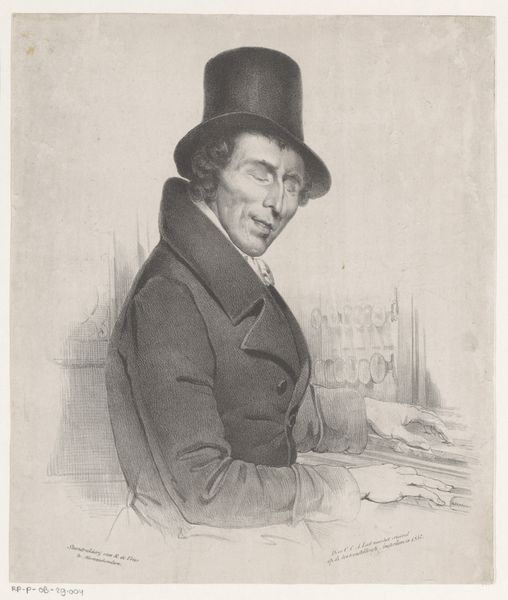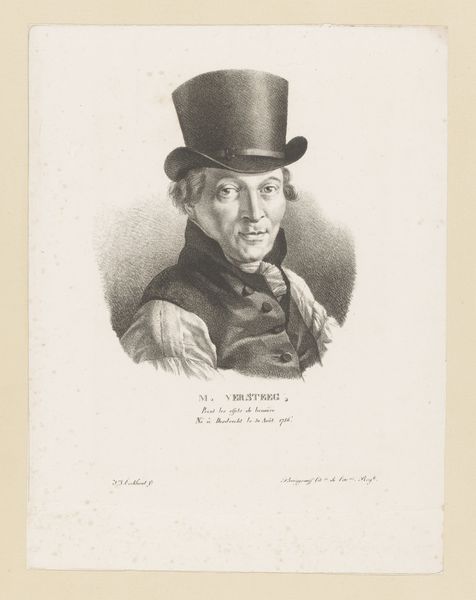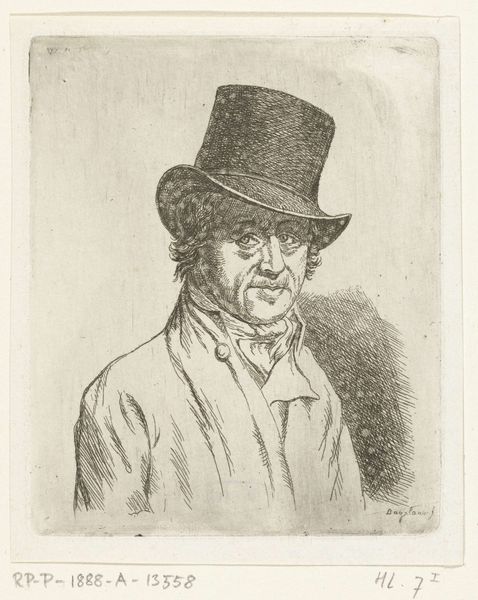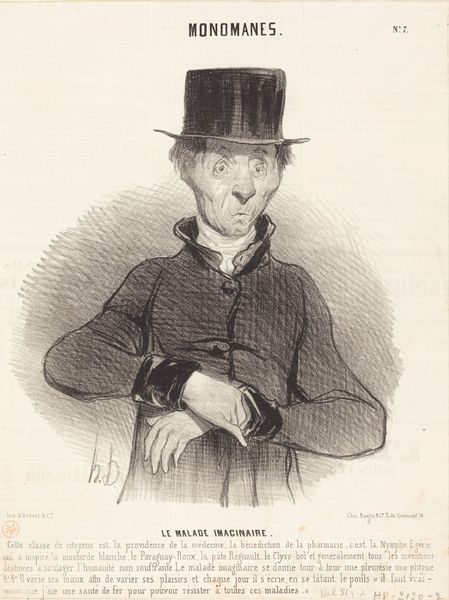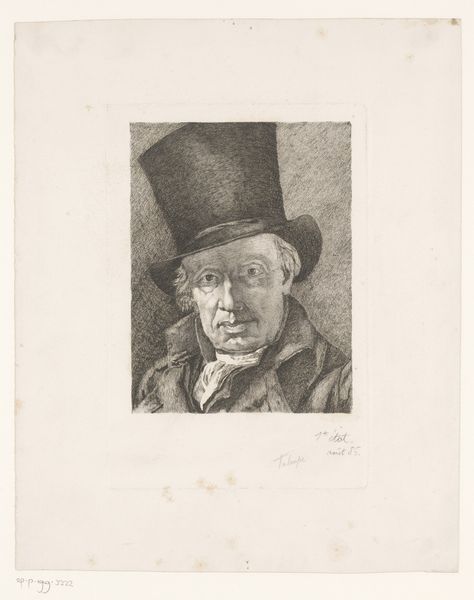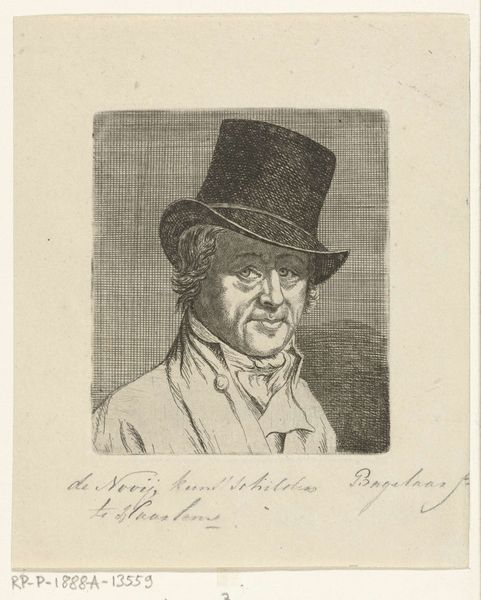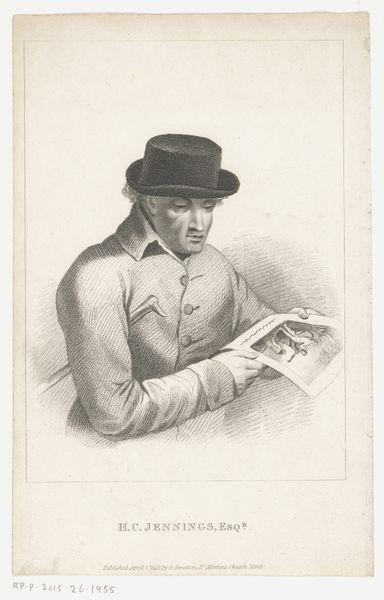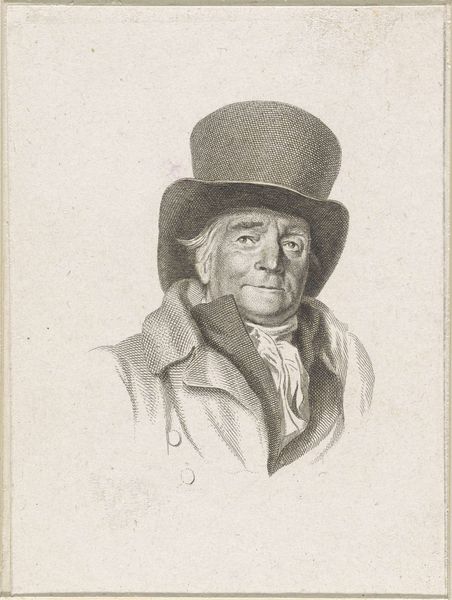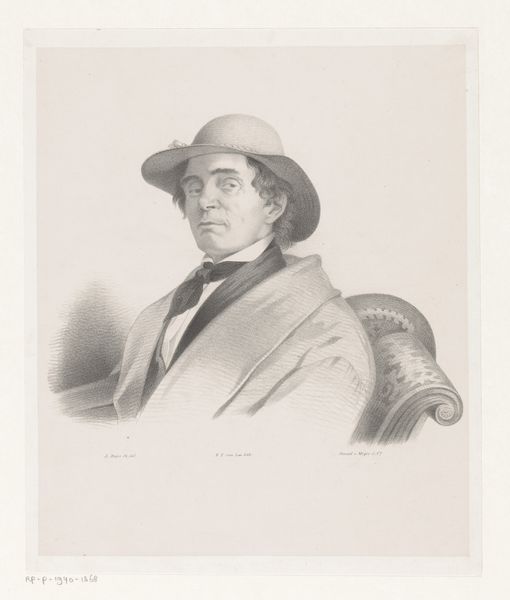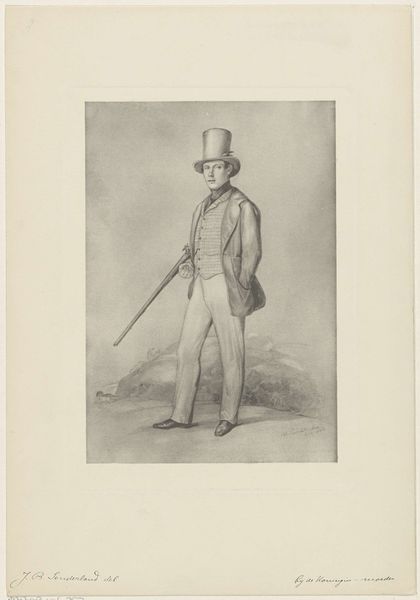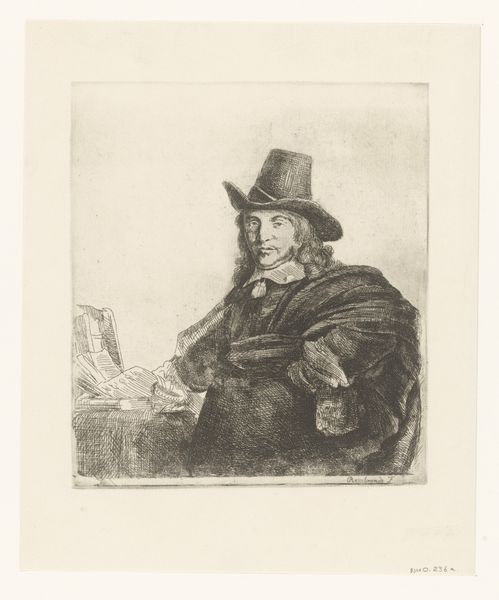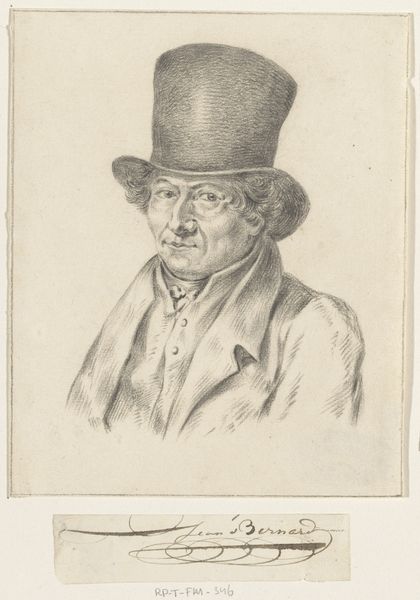
drawing, pencil
#
portrait
#
drawing
#
romanticism
#
pencil
#
line
Dimensions: height 286 mm, width 224 mm
Copyright: Rijks Museum: Open Domain
Editor: This is the "Portret van Pieter Pietersz Barbiers" drawing by Joannes Willem Vos, likely made between 1816 and 1853, currently housed in the Rijksmuseum. It’s a simple pencil drawing, but the details in the shading are quite striking. What do you make of it? Curator: As a materialist, I'm drawn to understanding the process of this work, and the societal implications of the tools involved. Pencil, in this period, was becoming increasingly accessible due to advances in graphite mining and manufacturing. How did that accessibility shape the field of portraiture, which was beginning to expand to middle class sitters? Editor: That’s a good point! It must have opened doors. Prior to more readily available pencils, were portraits generally commissioned artworks, more formal and costly, often relying on paint? Curator: Exactly. The mechanization of pencil production democratized image-making. Consider, too, the social role of paper; the rise of the merchant class allowed for wider use and innovation in stationery and writing materials. Look at how the lines form not only the portrait itself, but seemingly sketch the clothing that indicates trade and profession. Does it look to you like a study for a future work? Editor: Possibly. It does seem… economical in its execution, perhaps done in preparation for a painting, to test out a composition. You can almost feel the artist’s hand at work, quickly moving to capture the sitter's likeness. I hadn’t thought about it in terms of industrial and material accessibility before! Curator: Thinking about art through the lens of its materials and means of production allows us to connect it directly to the social and economic currents of the time. Editor: Absolutely, I see so much more than just a portrait now. Thanks!
Comments
No comments
Be the first to comment and join the conversation on the ultimate creative platform.
